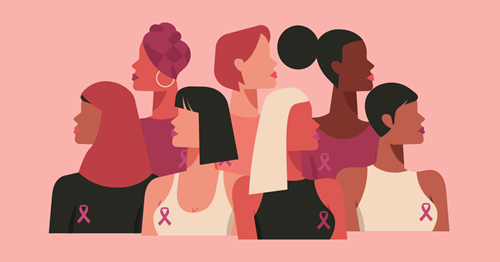New data from the Centers for Disease Control and Prevention (CDC) reveals that health-related social needs, including social isolation and cost of health care, prevent women from getting their mammograms.

The more health-related social needs a woman struggles with, the less likely she is to get lifesaving mammograms, according to a new Vital Signs report from the CDC.
The research team emphasized how important mammograms are to saving lives. Approximately 40,000 women die each year in the U.S. from breast cancer, and mammograms have been proven to reduce that mortality rate.
The current recommendations from the U.S. Preventive Services Task Force are for women ages 50-74 to get a screening mammogram every two years and that women ages 40-49 talk to their health care providers about when they should get a mammogram.
For the report, researchers analyzed data from the 2022 Behavioral Risk Factor Surveillance System, which includes mammography use data, to better understand the association between women’s health-related social needs and whether they were up to date on their mammograms.
Here are the biggest takeaways:
- One in four women ages 50 to 74 had not received a mammogram in the past two years
- Three in 10 women ages 50 to 74 with three or more health-related social needs had not received a mammogram
- Women who reported cost as a barrier to their health care had about two times the odds of not getting a mammogram
- Women without health insurance and women who did not have a personal health care provider were less likely to have a mammogram in the previous two years compared to those with health insurance and a personal provider
- Mammography use was higher among women with higher income and higher education attainment
- Mammography use decreased with the increasing number of health-related social needs
- Women who reported no adverse health-related social needs had an average mammography use prevalence of 83.2 percent, whereas women who reported one, two, or three to 11 adverse health-related social needs had an average mammography use prevalence of 77.1 percent, 73.3 percent, and 65.7 percent, respectively
- For women ages 40-49, social isolation, lost or reduced employment, and cost as a barrier to health care were significantly associated with not having a mammogram in the previous two years
- For women ages 50-74, life dissatisfaction, social isolation, lost or reduced employment, receiving food stamps, a lack of reliable transportation, and cost as a barrier to health care were significantly associated with not having a mammogram in the previous two years
“We have to address these health-related social needs to help women get the mammograms they need,” said CDC Chief Medical Officer Debra Houry, M.D., M.P.H., in a statement. “Identifying these challenges and coordinating efforts between health care, social services, community organizations, and public health to help address these needs could improve efforts to increase breast cancer screening and ultimately save these tragic losses to families.”

